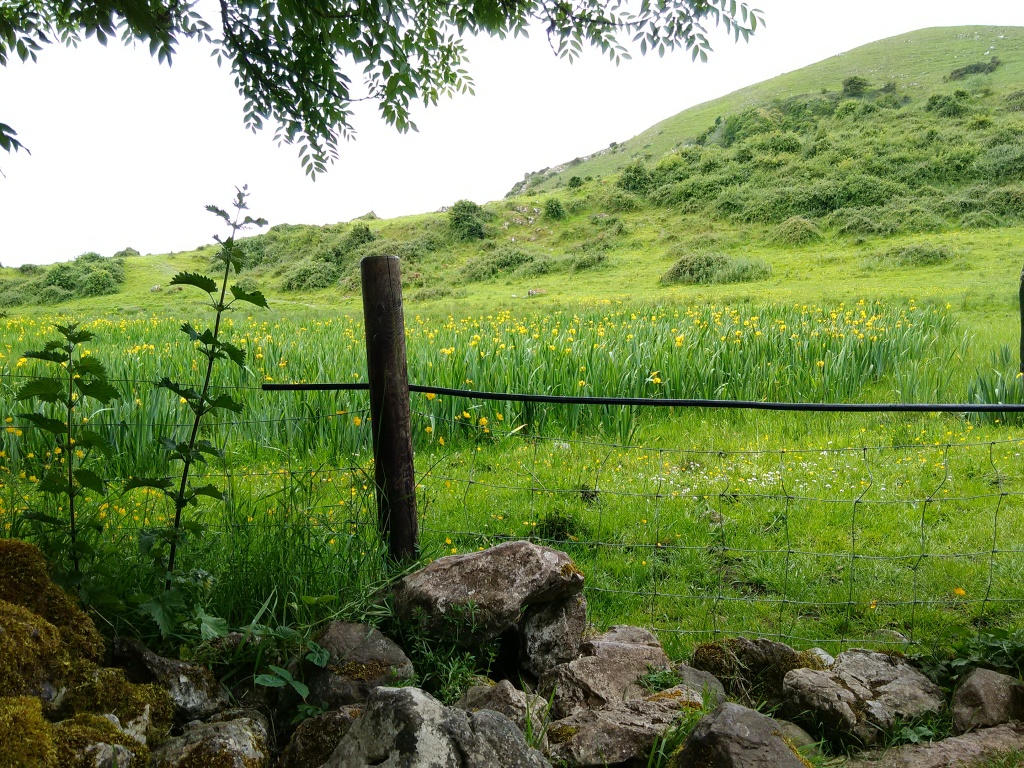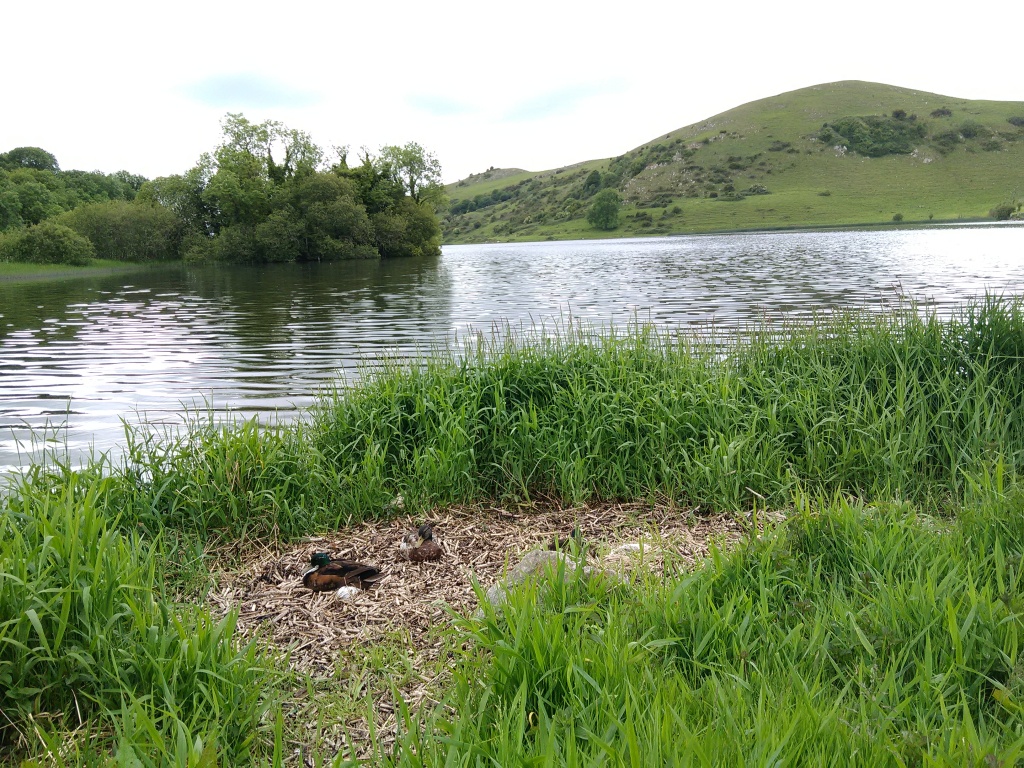..sleeping in a cave in the region of Lough Gur and emerges at the time of Ireland’s need, galloping around the lake on his great white horse.
tale which tells a story of a 14th century lord of Munster . ..
Between the valleys and forests, underneath the ever-changing Irish sky , dwells the peaceful horse-shoe shaped lake of Lough Gur.. .
TodaysWanderluster present’s you, with this week’s article on Lough Gur,
‘A Horse-Shoe Shaped Lake – Lough Gur’

… wanna read more about lakes ? We encourage you to check out our article on the Killarney National Park in which we talk about the lakes of Lough Leane and L.Muckross “the gates of the Ring of Kerry” in Ireland… .
>To Killarney
Hey guys ,
Welcome back to TodaysWanderluster !! It is Friday 11th of September, the day where we will hit the road once again, in search of yet another fascinating place which finds itself burried in the vast lands of beauty of the country of Ireland.
This week we will be heading out to our western county neighbour, just nextdoor, to county Limerick in Ireland.
Our this week’s location, Lough Gur.
The TodaysWanderluster would like to encourage you to subscribe to us, so that you don’t miss out on any adventures with us. You can subscribe here or by locating the subscribe botton at the end of this article. Let’s roll !!
>All images displayed within this article are un-edited versions and belong to Dawid Kucharski.
>Contact us if located any mistakes in this article here
What lies far in the vast grassland of Limerick countryside, between the valleys, coated with a blanket of emerald green that catches our eye, whenever we step foot into the Irish countryside, one can observe the calm waters of a lake, where just like a pair of invisible hands, is held together by a peaceful and yet magical ambiance.
Between the valleys and forests, underneath the ever-changing Irish sky,
dwells the peaceful horse-shoe shaped lake of Lough Gur.

Lough Gur or ‘Loch Guir’ in the Irish language, is as described.. .
a ‘horse-shoe’ shaped Irish lake.
Found further down south of Limerick City out in the countryside, located between the rural towns of Herbertstown, Meanus and Bruff, one may discover Lough Gur as a lake that is found at the very base of the Knockadoon Hill in the region.
Measuring 3.5 meters at it’s deepest level, Lough Gur is rather a shallow lake which is fed from it’s underground springs and isn’t a free flowing lake.
The lake of Lough gur is widely regarded across the county and the republic of Ireland as one of the most important archaeological sites, possessing a rich history, folklore, nature as well as scenic beauty. All of that which together, we will discover together on our adventure of the Lough Gur.
..let’s dive in!!
Discovering the Irish lake of Lough Gur
With humans having examined to live at the lake shorelines or in the region since the year 3000 BC, the lake near Herbertstown is known to maintain it’s position on the list, as one of the most important archaeological sites in the republic of Ireland.
Various megalithic remains have been discovered at the site of Lough Gur that are considered Irish national monuments, like for example the largest stone circle in Ireland, the ‘Grange stone circle’ and a dolmen which stands near the lake.
Other remains from the time are the three crannogs (which are artificial islands, commonly built in lakes and estuarine waters of Scotland, Wales and Ireland), the unearthed remains of Stone Age houses, ring forts and one hill fort which overlooks the lake.
In the area of Lough Gur, stands the Bourchier’s Castle, a medieval tower house named after Sir George Bourchier who was the son of the second Earl of Bath. The tower house can be found at the neck of the peninsula around the lake. More recent architectural remnants at the Lough Gur site include an early Christian church that can be found on the edge of the road leading to the lake, we can observe the ruins of the ‘Black Castle’ a Norman castle in the region on the far end of the Lough Gur Lake.
There is a little bit more to the ‘Black Castle’ as it is stated to be one of the keeps used during the Desmond Rebellions that occurred in 1569–1573 and then again in 1579–1583 in the Irish province of Munster and it is believed that this is also where the Earl of Desmond ‘secured’ his authority back in 1573, once he casted off his English apparel and donning Irish garments once on his return from London to the province of Munster.
At Lough Gur, we can also explore the replica of a Yetholm-type shield (the original housed in the National Museum of Ireland in Dublin) which dates back to the Bronze Age or 1200-800 BC and was found by Charles and Nicholas Hayes.
Opened in 1981, later taken over by the local community in 2011, the Heritage Centre at the Lough Gur site gives insight by shining a light on the rich heritage of Lough Gur with the aid of interactive multimedia exhibitions that perfectly bring the last 6,000 years at the site to life, that the visitors get to experience in person. Exhibitions at Lough Gur are suited for all ages with the events ran by fully trained and qualified guides that will take every visitor on a journey through the history of the Lough Gur lake, starting at the most earliest point in history of the Lake at the Mesolithic Era (10,000 – 8,000 BC) onwards to the 19th century.
From outside of the Heritage Centre or the Visitor Centre, we can observe a gradual shore-line accompanied by a shallow section of lake which reaches up to the maintained lawn. This area at the site is often used for water sport activities, though activities like fishing or the use of motorised craft on the water surface of the lake is not permitted.
The site at Lough Gur in Limerick county today, is regarded as the only place in whole of Ireland where one will get the chance to see visible remains of every age of mankind through-out the various centuries. Lough Gur, as mentioned at the beginning of this article, is one of the most important archaeological sites in Ireland but it also might just be a special site which never seizes to surprise!!
As our team did some more research on the site, we came across that even at one point in time, the region was home to the largest concentration of Giant Irish Deer, not just on the Island of Ireland but the whole continent of Europe.
The site at Lough Gur lake also holds an Irish old tale which tells a story of a 14th century lord of Munster and poet Gearóid Iarla (votary of the Goddess Áine) who is sleeping in a cave in the region of Lough Gur and emerges at the time of Ireland’s need, galloping around the lake on his great white horse.

Thank you for joining us on this week’s article. We hope you enjoyed reading this blog post and found it informative.
In our next week’s article we will be exploring the Cliffs at Mizen Head in Cork county. Check out our previous article on our adventure of the Lough Derg here or in the below panel if featured.
Share with us your feedback in the comment section below, tell us what you thought of our article today and perhaps what would you like to see us write about in the future. Reach us out on our social media platforms below.
Thank you for your support, slán go fóill !!

